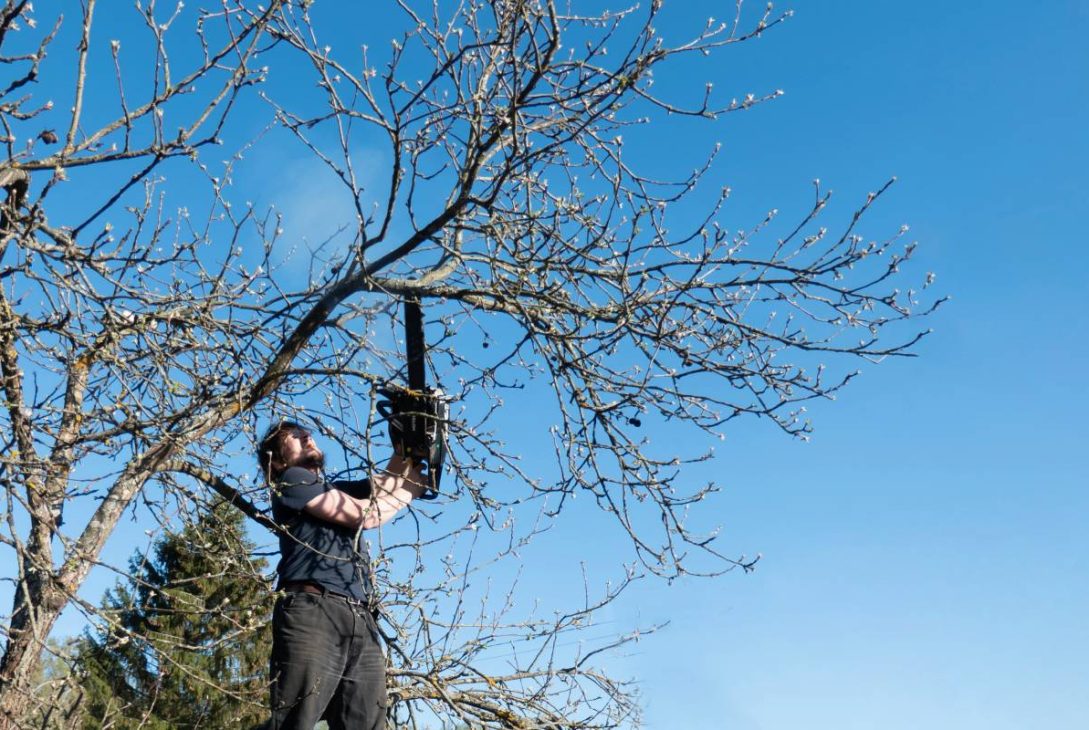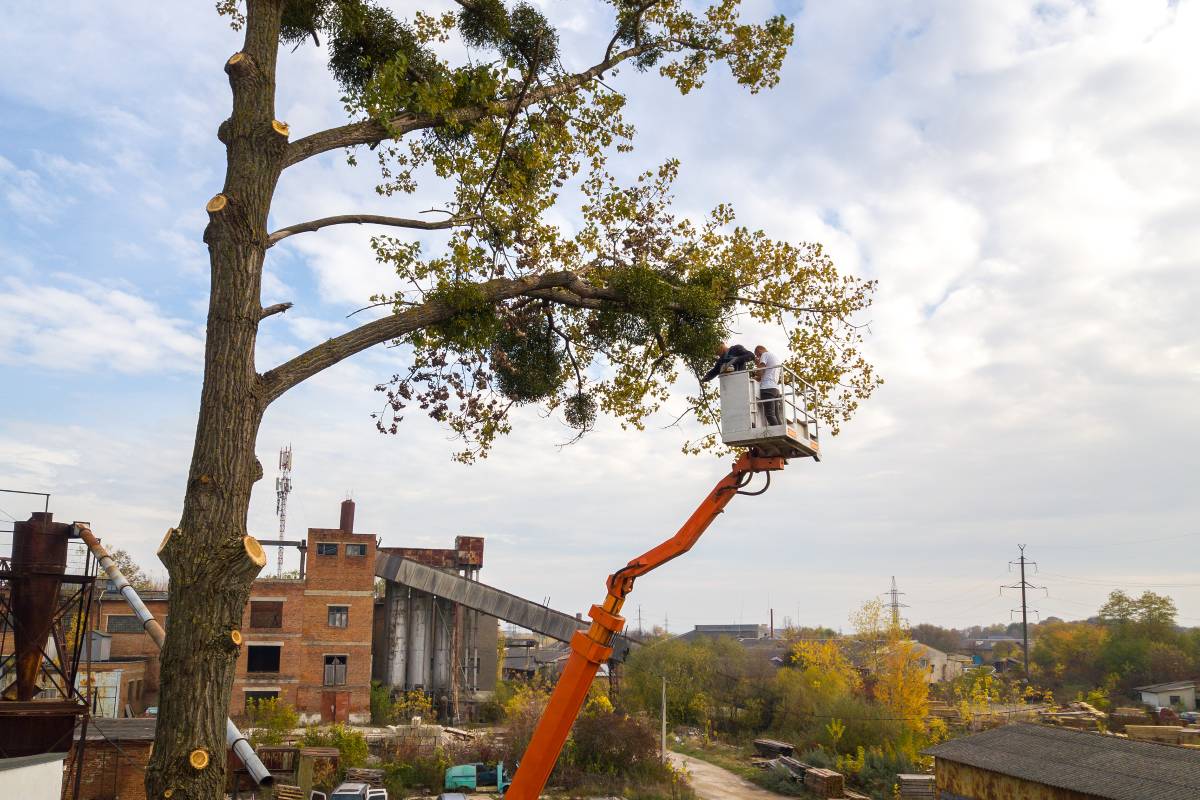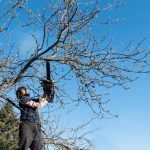Tree maintenance is essential for a healthy and attractive landscape. Whether it’s tree lopping or pruning, regular care helps ensure trees grow properly while reducing potential hazards. But can you take on these tasks yourself, or should you hire a professional?
This article explores the differences between tree lopping and pruning, the risks involved in DIY tree care, and when it’s best to call in an expert.
Understanding Tree Lopping and Pruning
What is Tree Lopping?
Tree lopping involves removing large sections of a tree, including major branches or even the top of the tree. It is usually done to control tree size, reduce hazards, or improve aesthetic appeal. However, improper lopping can damage a tree, making it more vulnerable to disease and decay.
What is Tree Pruning?
Pruning is a more precise technique aimed at maintaining tree health. It involves selectively removing dead, diseased, or overgrown branches to encourage better growth and improve structural integrity. Unlike lopping, pruning follows scientific methods to ensure trees remain strong and healthy.

Is DIY Tree Lopping and Pruning Safe?
Factors to Consider Before Doing It Yourself
- Tree Size and Location – Small trees with low-hanging branches may be manageable, but large trees near power lines or buildings require professional handling.
- Tools and Equipment – Proper pruning shears, saws, and safety gear are necessary to perform the job safely.
- Knowledge of Tree Health – Cutting the wrong branch can weaken a tree or cause unwanted regrowth.
- Personal Safety Risks – Climbing ladders with cutting tools can be hazardous, especially for inexperienced individuals.
Risks of DIY Tree Lopping
- Structural Damage – Incorrect lopping can lead to weakened trees, increasing the risk of falling branches.
- Infections and Decay – Exposing trees to pests and diseases through improper cuts.
- Regrowth Problems – Lopped trees often grow back poorly, requiring more frequent maintenance.
- Legal Issues – Some areas have regulations about tree lopping, and failure to comply can result in fines.
Risks of DIY Pruning
- Injury Risk – Falling branches or improper use of tools can cause serious injuries.
- Tree Damage – Over-pruning can stress a tree, leading to poor growth or disease.
- Unwanted Growth – Incorrect cuts can encourage weak or excessive regrowth, leading to more problems in the long run.
When Can You DIY, and When Should You Call a Professional?
Tasks You Can Do Yourself
If you’re confident in your abilities and have the right tools, you can handle small-scale pruning tasks like:
- Trimming small branches under 5 cm in diameter.
- Removing dead or diseased twigs.
- Shaping young trees to encourage proper growth.
- Clearing minor overgrowth near walkways.
Tasks Best Left to Professionals
- Lopping Large Trees – Removing major branches or tree tops requires expertise.
- Dealing with Trees Near Power Lines – Only certified arborists should handle these situations.
- Removing Diseased or Pest-Infested Trees – Professionals can assess the best course of action.
- Tree Cutting on Public Property – Legal permits and regulations may be involved.
- Stump Removal – Grinding or removing stumps is labour-intensive and requires special machinery.
Benefits of Hiring a Certified Arborist
Professional tree care specialists, such as certified arborists, offer several advantages:
- Expertise – Knowledge of proper pruning techniques for tree health and safety.
- Equipment – Access to advanced tools for efficient and safe work.
- Safety Assurance – Trained in handling dangerous tree removal situations.
- Legal Compliance – Ensures work is done according to local council regulations.
Essential Tools for DIY Tree Pruning
If you decide to prune your trees, make sure you have the right equipment:
- Hand Pruners – Ideal for small branches.
- Loppers – Useful for cutting thicker branches.
- Pruning Saw – Required for larger branches.
- Pole Pruners – Helps reach high branches safely.
- Ladder and Safety Harness – Essential for elevated work.
- Gloves and Protective Gear – Prevents injuries from sharp tools and falling debris.
Best Practices for DIY Tree Pruning
- Know When to Prune – Most trees benefit from pruning in late winter or early spring.
- Use the Right Cutting Technique – Cut just above a bud or lateral branch to encourage healthy growth.
- Avoid Over-Pruning – Never remove more than 25% of a tree’s canopy in one season.
- Disinfect Tools – Prevent the spread of disease by cleaning pruning tools between cuts.
- Check Local Regulations – Some regions require permits for tree pruning or removal.
Conclusion: Should You DIY or Hire a Pro?
While DIY tree pruning is possible for small tasks, tree lopping is best left to professionals. If you have the right tools and knowledge, you can safely trim small branches.
However, for large trees, complex pruning, or hazardous situations, hiring a certified arborist is the safest choice. Proper tree care ensures healthy, long-lasting trees while minimizing risks to property and people.












